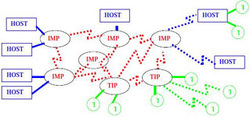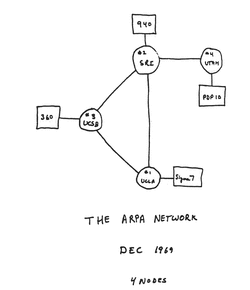Structure
"ARPA came up with the concept of creating a network whereby if you, as a researcher, wanted access to my resources,
you log on to my machine through the network and run your job on my machine for the special resources you were looking for."
- Leonard Kleinrock, 3/13/13
"As the ARPANET proved the 15:1 cost advantage over circuit switching (the telephone network) and allowed far greater speed potential,
it led the way. It then grew into the Internet."
- Larry Roberts, 3/21/13



